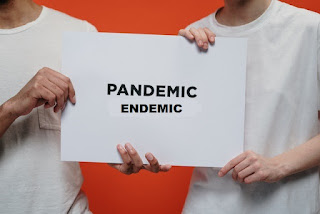 |
| Understanding the Difference Between Pandemic and Endemic |
Maybe there are still many people who don't understand the difference between a pandemic and an endemic. In fact, not a few are wrong in using both terms. Therefore, so as not to misunderstand, recognize the different definitions of pandemic and endemic.
Since the emergence of COVID-19, people have been introduced to various languages to understand the virus, including the terms pandemic and endemic. Pandemic and endemic itself is a term in the science of epidemiology that discusses the spread of infectious diseases.
Many people still misunderstand the difference between a pandemic and an endemic. This is reasonable because these two terms can indeed be used interchangeably to label a disease, according to the development of the disease from time to time.
Definition of Pandemic and Endemic
Before knowing the difference between a pandemic and an endemic, it's a good idea to first understand the definitions of these two terms.
Endemic is a disease that occurs in a certain area, region, or country. Disease outbreaks can be said to be endemic if they occur consistently with a significant increase in the number of cases in an area. Examples of endemic diseases in Indonesia are malaria, dengue fever, and measles.
Meanwhile, a pandemic is an outbreak of a disease that has spread across several countries or continents. A disease is declared a pandemic when the rate of increase in cases continues to increase every day and covers a wide area to various countries.
In addition to COVID-19, examples of pandemics that have occurred in the world, namely:
- The bubonic plague (1347–1353)
- Flu (1889–1890)
- Spanish Flu (1918–1920)
- Asian Flu (1957–1958)
- AIDS (1981–present)
Difference Between Pandemic and Endemic
According to the World Health Organization or WHO, pandemics and endemics are distinguished based on the level of spread of the disease, not on the severity of the disease.
Although the endemic itself is quite large and covers an area, the spread of the disease is still under control. Meanwhile, the pandemic is international and out of control.
A pandemic means the rate at which a disease has spread across international boundaries beyond the scope of the endemic area. It is this wider geographical reach that makes pandemics cause large-scale social disruptions, even economic losses.
It is important to note that an endemic state can develop into a pandemic state. On the other hand, the pandemic status of a disease can also change to endemic, depending on the level of spread of the disease over time.
Even so, endemic status basically doesn't mean that the virus or bacteria have disappeared completely and stopped causing certain diseases, such as COVID-19.
The status of a pandemic can change to endemic when enough people have acquired immune protection from vaccination or natural infection. That way, the transmission of the disease will be reduced and there will be fewer hospitalizations and deaths from the disease, even while the virus is still circulating.
After understanding the difference between a pandemic and an endemic, you are expected to be more responsive and understand more when reading health news. If you are still confused or have questions regarding the terms pandemic and endemic, you can ask your doctor directly.
Related Searches:
- difference between pandemic and endemic,
- epidemic pandemic and endemic,
- what's the difference between a pandemic and endemic,
- what's the difference between pandemic and endemic,
- what is the difference between pandemic and endemic,
- pandemic and endemic,
- what is the difference between a pandemic and endemic,
- what is difference between pandemic and endemic,
- whats the difference between pandemic and endemic,
- difference in pandemic and endemic,
- the difference between pandemic and endemic,
- pandemic and endemic difference,
- difference between pandemic and endemic meaning,
- diff between pandemic and endemic,
- difference between a pandemic and endemic,
- difference pandemic and endemic,


